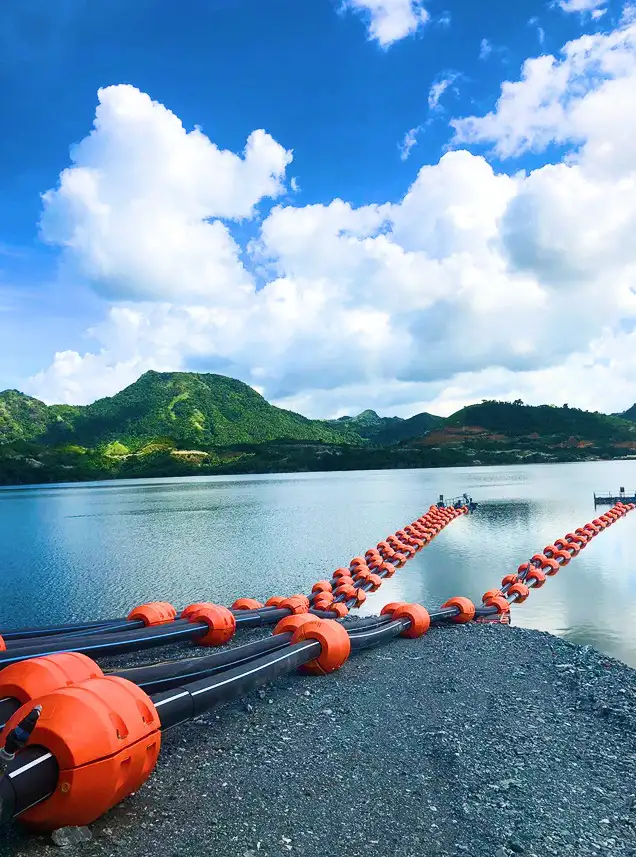
In the demanding and often harsh environment of modern mining, the infrastructure used to transport water, slurry, tailings, and process chemicals is critical to operational success. For decades, traditional materials like steel, concrete, and ductile iron were the default choice. However, the operational, environmental, and financial advantages of large diameter high-density polyethylene (HDPE) Pipe have made it the premier material for new and replacement mining projects worldwide.
Large Diameter HDPE (High-Density Polyethylene) Pipe is a thermoplastic pipe made from polyethylene, engineered for large-scale fluid and gas transfer applications. Characterized by its remarkable strength, flexibility, and durability, it has become a preferred material for critical infrastructure projects worldwide, often replacing traditional materials like concrete, ductile iron, and steel.
While standard HDPE pipe is used in countless applications, "large diameter" typically refers to pipes with an outside diameter of 12 inches (315 mm) to over 100 inches (2500 mm). These massive pipes are designed to move significant volumes of water, wastewater, chemicals, and slurries reliably and efficiently over a long service life.
The widespread adoption of large diameter HDPE pipe is driven by a unique combination of beneficial properties:
1. Leak-Free, Monolithic Joints
This is arguably the most significant advantage of HDPE. Sections of pipe are joined using thermal butt fusion. This process involves heating the ends of the two pipes to a molten state and pressing them together under controlled pressure. The result is a permanent, seamless joint that is as strong as, or stronger than, the pipe itself.
Benefit: Eliminates leaks, which are a common point of failure in traditional gasketed pipe systems. This prevents water loss, soil contamination, and costly repairs.
2. Corrosion and Chemical Resistance
HDPE is chemically inert and does not rust, rot, or corrode. It is highly resistant to a wide range of chemicals, acids, bases, and aggressive soil conditions.
Benefit: Ideal for wastewater, industrial chemicals, and saline environments (like marine outfalls) where metal pipes would quickly degrade. It requires no expensive coatings or cathodic protection.
3. Flexibility and Fatigue Resistance
HDPE pipe is flexible and can bend without breaking. It can accommodate a bending radius of 20 to 25 times its outside diameter.
Benefit: This simplifies installation in uneven terrain, allows for gradual directional changes without fittings, and makes the pipe exceptionally resilient to ground movement, vibrations, and seismic events.
4. Durability and Abrasion Resistance
The material is tough and resistant to impacts and abrasion. Its inner surface is highly resistant to wear from abrasive slurries like sand, gravel, or mine tailings.
Benefit: Outperforms steel and concrete in many abrasive applications, leading to a longer service life in demanding environments like mining and dredging.
5. Superior Hydraulic Efficiency
HDPE has an extremely smooth interior surface, resulting in minimal friction loss and excellent flow characteristics. Its Hazen-Williams "C" Factor is around 150, which does not degrade over time.
Benefit: Allows for smaller pipe diameters or lower pumping energy to achieve the same flow rate compared to materials like concrete or iron, which roughen over time.
6. Lightweight and Easier Installation
Compared to its volume, HDPE is significantly lighter than concrete or steel.
Benefit: Reduces transportation costs, requires less heavy machinery for handling, and speeds up installation, leading to significant project cost savings.
7. Ideal for Trenchless Installation
Its flexibility and strength make large diameter HDPE the premier choice for trenchless construction methods like Horizontal Directional Drilling (HDD), Pipe Bursting, and Sliplining.
Benefit: Allows for pipe installation under rivers, highways, and in congested urban areas with minimal surface disruption, environmental impact, and social cost.
Large diameter HDPE pipe is the solution of choice for a wide array of critical applications:
Municipal Water Systems: Potable water transmission mains and raw water intakes.
Wastewater Management: Sanitary sewer force mains, stormwater drainage, and combined sewer overflows (CSOs).
Industrial & Mining: Transport of process water, tailings and slurry lines, and chemical processing.
Energy Sector: Cooling water intakes and outfalls for power plants (including nuclear), and as conduit for high-voltage cables.
Marine & Dredging: Ocean outfalls for wastewater, desalination plant intakes, and dredging lines. The pipe can be fused into long strings on shore and floated into position before being sunk.
Agriculture: Large-scale irrigation and water transfer systems.
Landfill Management: Leachate and gas collection systems.
While butt fusion is the primary method, other techniques are also used:
Butt Fusion: The standard for joining pipe sections end-to-end to create a continuous, leak-proof pipeline.
Electrofusion: Involves specialized fittings with embedded heating coils. Used for tying in branches, repairs, or in situations where butt fusion equipment cannot be used.
Flange Adapters: Used to connect HDPE pipe to other materials, such as ductile iron pipe, valves, and pumps. An HDPE stub end is butt-fused to the pipe, and a metal backing flange is used to create a bolted connection.
UV Degradation: Standard black HDPE pipe contains carbon black, which acts as a powerful UV inhibitor, allowing it to be used and stored outdoors for many years. Non-black pipe may require protection from direct sunlight.
Thermal Expansion: HDPE has a higher coefficient of thermal expansion than metal. This must be accounted for in the design of above-ground pipelines to manage expansion and contraction with temperature changes.
Specialized Training: Proper butt fusion requires certified technicians and specialized, well-maintained equipment to ensure joint integrity.
Large Diameter HDPE Pipe represents a modern, engineered solution for large-scale infrastructure. Its unique combination of leak-free joints, corrosion resistance, flexibility, and installation advantages makes it a highly reliable, cost-effective, and environmentally sound choice. With a design life of 50 to 100+ years, it provides a long-term, low-maintenance solution for ensuring the safe and efficient transport of the world's most vital resources.
